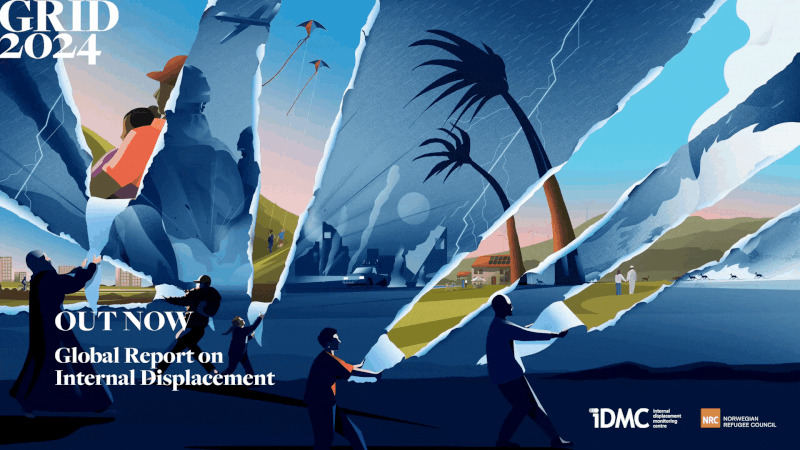One Sun One World One Grid (OSOWOG) Initiative

- 10 Nov 2024
In News:
- India is in talks with Oman, UAE, Saudi Arabia, Maldives, and Singapore to establish cross-border electricity transmission lines.
- This is part of the ambitious OSOWOG initiative to create a global renewable energy grid.
Key Points:
- Proposed by the Prime Minister of India at the 2018 International Solar Alliance (ISA) Assembly.
- Aims to create a transnational electricity grid that delivers power worldwide.
- Led by India and the UK, in collaboration with ISA and the World Bank Group.
Vision of OSOWOG:
- Connect regional grids through a common infrastructure for the transfer of renewable energy, focusing on solar power.
- Harness solar and other renewable energy from regions where the sun is shining and efficiently transmit it to areas of need.
- Aim to provide power to 140 countries using clean and efficient solar energy.
Phases of OSOWOG:
- Phase 1:
- Connect the Indian grid with grids in the Middle East, South Asia, and South-East Asia.
- Share solar and other renewable energy resources.
- Phase 2:
- Expand the interconnected grid to include renewable resources from Africa.
- Phase 3:
- Achieve a global interconnection aiming for 2,600 GW by 2050.
- Integrate as many countries as possible into a single renewable energy grid.
Global Collaboration:
- Involves national governments, international organizations, legislators, power operators, and experts.
- Focus on accelerating infrastructure development for a clean energy-powered world.
Global Report on Internal Displacement 2024 (GRID-2024)

- 16 May 2024
Why is it in the News?
Floods, cyclones, earthquakes and other disasters triggered over half a million internal displacements in India in 2023, according to Geneva-based Internal Displacement Monitoring Centre (IDMC).
About Global Report on Internal Displacement 2024:
- The Global Report on Internal Displacement (GRID) 2024, published by the Internal Displacement Monitoring Centre (IDMC) based in Geneva, Switzerland.
- It is the authoritative source for data and analysis on the state of internal displacement for the previous year.
- Each year, IDMC presents the validated estimates of internal displacements by conflict and disasters, and the total cumulative numbers of IDPs worldwide.
- The GRID also provides an overview of the year’s most significant internal displacement situations, highlighting potential measures to address the issue across the humanitarian, development, disaster risk reduction and climate change agendas.
- The 2024 Global Report on Internal Displacement (GRID) report presents the data and analysis behind the 75.9 million people living in internal displacement as of the end of 2023.
- It is the ninth edition of the GRID and includes global and regional insights into the risk, scale and impacts of internal displacement.
Highlights of the GRID 2024:
- Rising Numbers of (IDPs): In 2023, the number of internally displaced persons (IDPs) reached 75.9 million, up from 71.1 million the previous year.
- Causes of Displacement: Disasters contributed to 7.7 million displacements, with earthquakes being responsible for one-fourth of these.
- Conflict and violence led to 68.3 million displacements.
- High-Displacement Countries: Sudan, Syria, the Democratic Republic of Congo (DRC), Colombia, and Yemen account for almost half of the world's IDP population.
- Significant Increases: Sudan had the highest number of IDPs recorded for a single country in 2023, reaching 1 million.
- The majority of new displacements occurred in Sudan, the Palestinian territories, and the DRC, accounting for nearly two-thirds of all cases.
- South Asia Displacement: Approximately 3 million people across South Asia experienced internal displacement due to conflict and violence, with 80% of them located in Afghanistan.
- Manipur violence resulted in 67,000 displacements, marking the highest number of conflict and violence-related displacements in India since 2018.
- Impact of Natural Disasters: There was a notable decrease in internal displacement due to natural disasters in India in 2023, dropping from 2.5 million in 2022 to 528,000.
About Internal Displacement Monitoring Centre (IDMC):
- Established in 1998, the IDMC is the leading source of information and analysis on internal displacement.
- It was created to address a significant gap in knowledge on global patterns and scales of internal displacement.
- IDMC defines internal displacement as the number of forced movements of people within their own country over a given year.
- The IDMC is a part of the Norwegian Refugee Council (NRC), an independent, non-governmental humanitarian organization.
- Primary Roles: The IDMC serves as a global monitor and advocate for evidence-based policy and action.
- It aims to influence governments, UN agencies, donors, international organizations, and NGOs.
- As the official repository of data and analysis on internal displacement, the IDMC's GRID provides critical insights into the global internal displacement crisis and aids in developing informed solutions.
National Judicial Data Grid (NJDG) portal (PIB)
- 15 Sep 2023
What is the News ?
Recently, the Chief Justice of India declared the inclusion of the Supreme Court in the National Judicial Data Grid (NJDG) during a public court session.
Facts About:
- The National Judicial Data Grid (NJDG) portal serves as a comprehensive national database for tracking cases in courts throughout India.
- It provides access to case-related information and statistics, including the number of cases filed, pending, and resolved, as well as case types and year-wise data for the Supreme Court of India.
- The NJDG portal is part of the e-Courts Project and covers 18,735 District & Subordinate Courts and High Courts.
- Developed by the National Informatics Centre (NIC) in collaboration with the Computer Cell, Registry's software development team, the NJDG portal features an interactive interface and analytics dashboard.
- It is regularly updated with current case data and serves as a valuable tool for monitoring and managing case backlogs, supporting policy decisions to expedite case resolution, and improving overall court performance.
- Additionally, it aids in tracking land dispute cases.
One Sun, One World, One Grid (OSOWOG) (PIB)
- 11 Sep 2023
What is the News ?
New Delhi recently hosted a full-day conference discussing "Transnational Grid Interconnections for One Sun, One World, One Grid (OSOWOG).
Facts About:
The OSOWOG initiative was introduced by the Prime Minister of India during the First Assembly of the International Solar Alliance (ISA) in October 2018.
Its goal is to link energy supply across international borders.
Vision:
- The initiative plans to connect various regional power grids using a common grid to transmit renewable energy, especially solar power.
The project is a collaboration between the governments of India and the UK, along with the International Solar Alliance (ISA) and the World Bank Group.
It will bring together governments, financial organizations, legislators, power operators, and experts to speed up the development of the infrastructure needed for a world powered by clean energy.
Completion timeline:
- The ISA is expected to establish this grid in the next few years.
- Once operational, it will transmit solar power to different countries.
